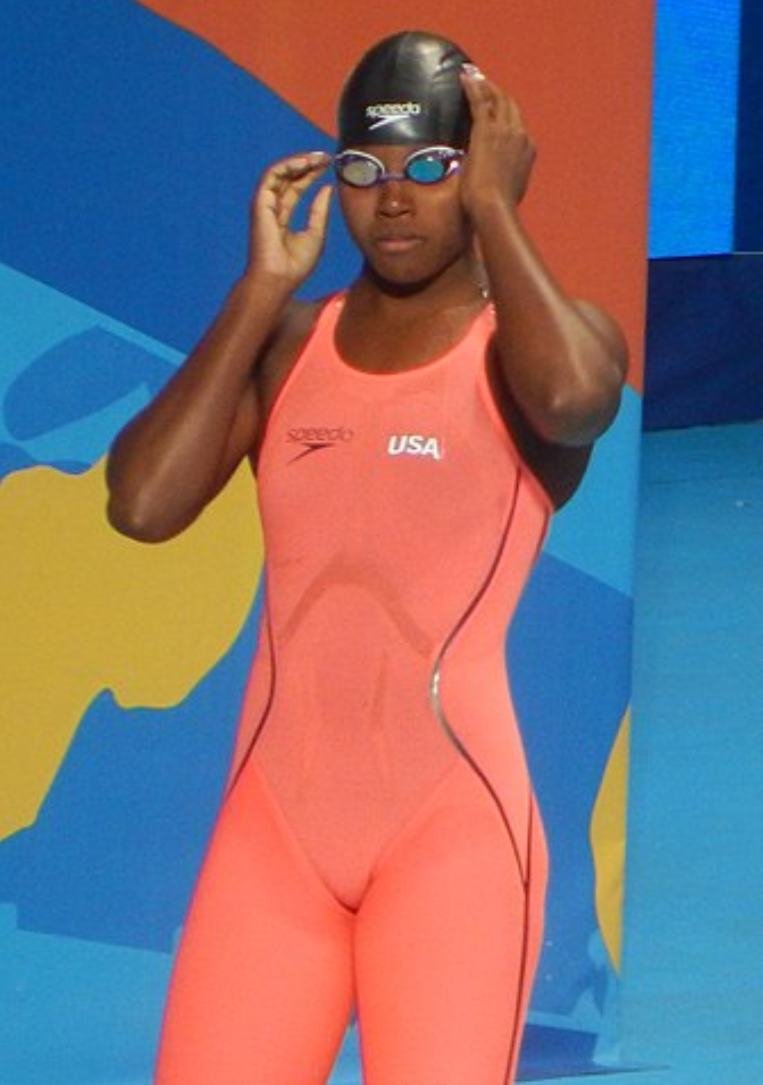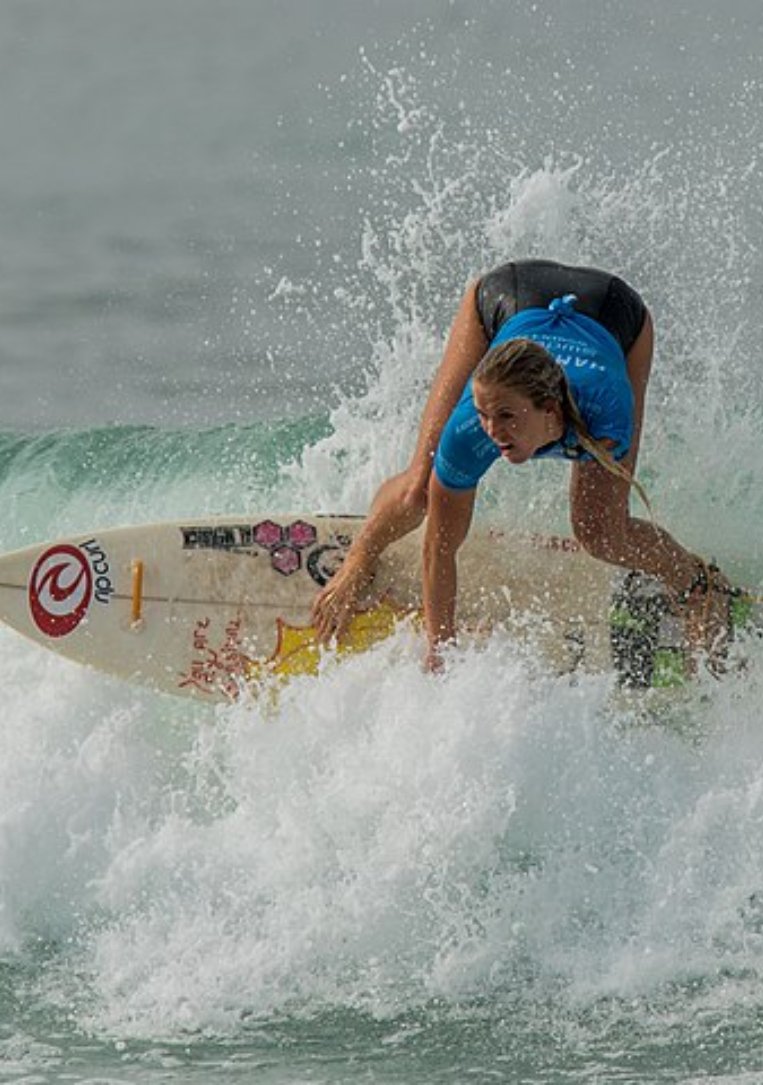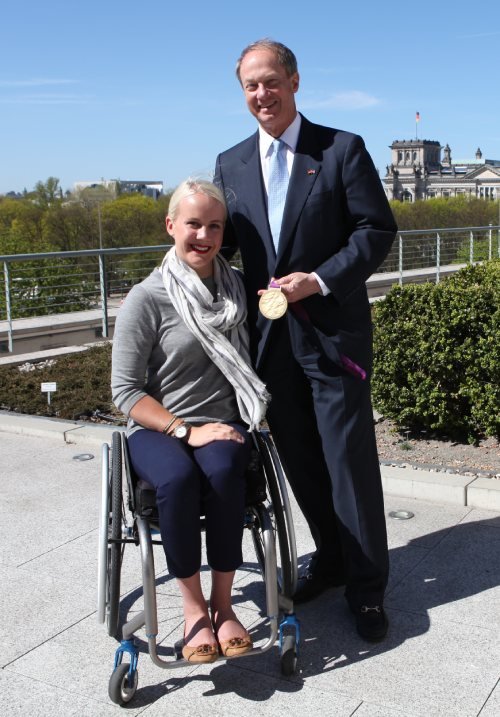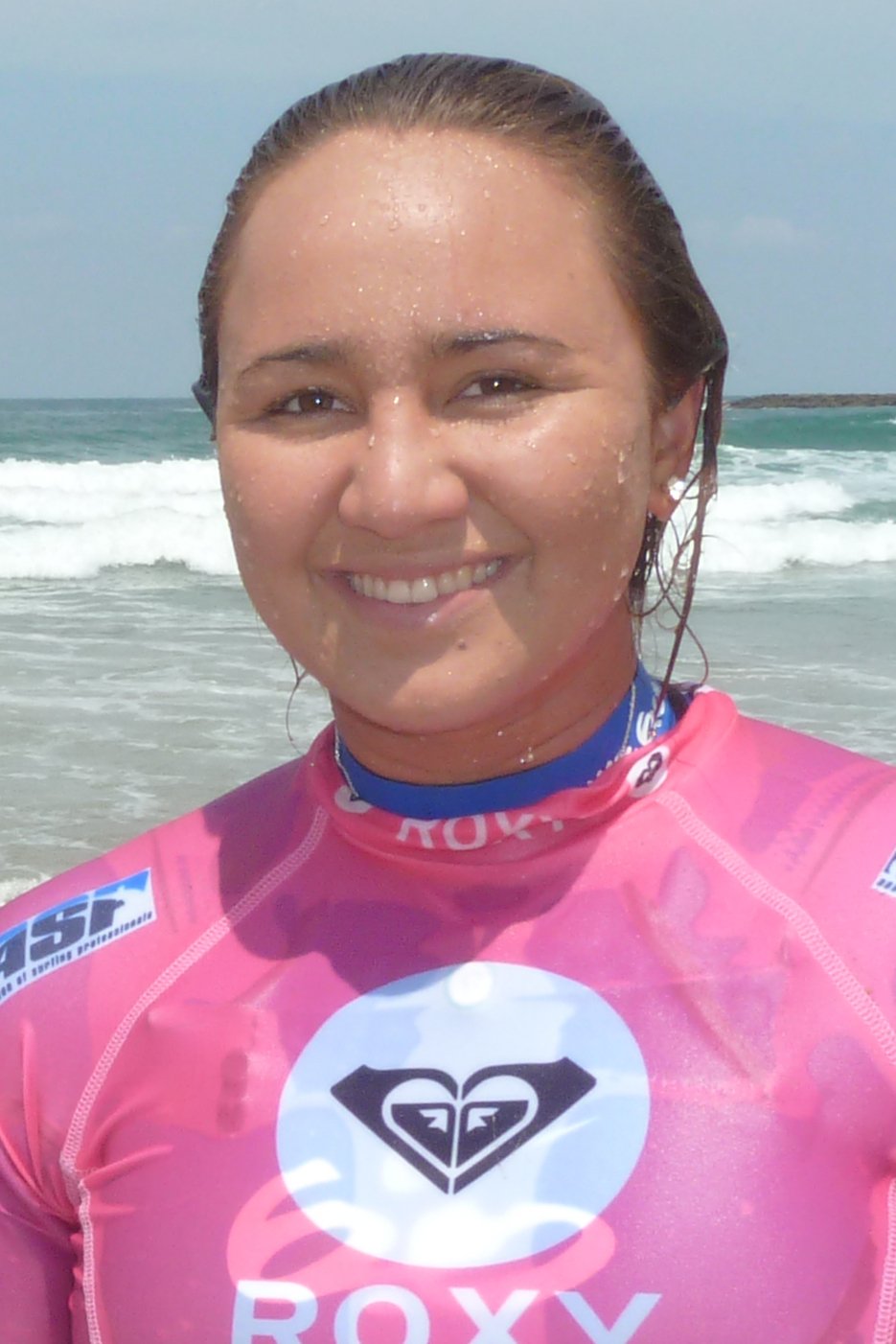In the world of elite swimming, where milliseconds separate champions from challengers, Simone Manuel has made waves that extend far beyond the pool. The first Black American woman to win an individual Olympic gold medal in swimming didn’t just break records—she shattered barriers that had stood firm for generations. But before the medals, before the history-making moments that would define her career, there was just a water-loving kid from Sugar Land, Texas, navigating a sport where few looked like her.
Simone Manuel: A Water-Loving Toddler in Texas
Some kids are born for their destiny. For Simone Ashley Manuel, born August 2, 1996, water seemed to call her name before she could even walk.
“She was fearless around water even as a toddler,” her mother Sharron recalls with a laugh. At 18 months old, young Simone once sneaked into the bathtub fully clothed, drawn by an inexplicable fascination with water. By three, she was fearlessly leaping off diving boards, and at four, she insisted on joining her brothers’ swim team.
Sharron, knowing better than to throw her toddler straight into competitive swimming, enrolled her in swim lessons first. The instructors barely had time to assess her skills—by the second day, little Simone had swum across the entire pool, determined to keep up with the older kids. Her trajectory was set.
Growing up in a family of athletes (her parents and two older brothers all played sports), Simone tried her hand at everything: basketball, volleyball, soccer, Girl Scouts, and even played the clarinet. She took ballet lessons until age 11, balancing dance slippers with swim goggles. But the pool always held a special magnetism for her.
“I was motivated by my general love for the sport at a young age,” Simone Manuel says of her childhood. “I decided to pursue it because I loved it so much.”
But love, even at its purest, sometimes isn’t enough when you’re blazing trails.
Alone in the Lane: Facing Racial Isolation
At age 11, during a swim meet where the bleachers were filled with spectators and competitors, Simone looked around and noticed something that would shape her understanding of her place in the sport: she was the only Black swimmer in sight.
“Why aren’t there more people who look like me at these swim meets?” she asked her mother, a question that caught Sharron off guard.
Without an immediate answer, mother and daughter embarked on research that would reveal swimming’s troubled racial history in America. They discovered decades of segregation where Black Americans were denied access to public pools—and how after desegregation, many pools were drained or filled with cement rather than allow integration.
“It enlightened her that the reason a lot of blacks haven’t been involved in swimming was that in the past we didn’t have access to facilities,” Sharron explained. “It wasn’t that we didn’t have the physical ability.”
This revelation became a turning point. Rather than discouraging her, it fueled young Simone’s determination. “It taught her, ‘There’s no reason why I can’t do this. I can do this,'” her mother said.
But knowing the history didn’t make living it any easier. As she progressed through competitions, Manuel often found herself isolated—the odd one out in a sea of white faces. Sometimes the racism was subtle: confused looks when she showed up at meets, assumptions she must be there for another sport. Other times it was more direct: being excluded from teammates’ social events or having peers laugh at her career choice, asking why she didn’t pursue “track or basketball” instead.
By age 15, when Manuel made the U.S. national junior team, her parents hired a sports psychologist, recognizing that “this kid was going to have to deal with a lot” as a Black swimmer in a predominantly white sport. The constant awareness of being different took its toll.
“Being the only one at meets was exhausting at times,” Manuel has admitted. Every question about race in swimming seemed directed at her alone—a burden no teenager should have to bear.
The NCAA Breakthrough and Historic Podium
In 2010, a 14-year-old Simone Manuel attended USA Swimming’s Diversity Select Camp. For the first time, she wasn’t alone. Surrounded by other talented minority swimmers, she found a community that understood her unique challenges.
This experience proved pivotal, showing her she wasn’t alone on her path. With renewed confidence, Manuel’s progress accelerated. At 15, she made her international debut at the 2011 World Junior Championships, and by 16, she was competing in the 2012 U.S. Olympic Trials.
Though she didn’t make the London Olympic team—finishing 17th in the 100m freestyle and 20th in the 50m—the experience only strengthened her resolve. Rather than being discouraged, she doubled down on training, already eyeing the next Olympic cycle.
Throughout these formative years, her family remained her foundation. Simone would eagerly wake up for 6 a.m. practices as a kid, never complaining even when sore or tired. Her mother “took her lead,” letting her daughter’s passion drive the commitment, while her father and brothers provided unwavering support.
By the time she graduated from Austin High School in 2014, Simone Manuel was the nation’s top recruit in women’s swimming, headed to Stanford University on scholarship.
A Jackie Robinson Moment
College swimming brought new challenges and historic triumphs. During her freshman year at Stanford, Manuel quickly made her mark, winning the 100-yard freestyle title at the 2015 NCAA Championships.
What happened next sent ripples through the swimming world: the top three finishers in that race – Simone Simone, her Stanford teammate Lia Neal, and Florida’s Natalie Hinds—were all African American women, a first in NCAA swimming history.
“Three African American women on the podium? It was amazing. I had goosebumps,” said Olympic gold medalist Cullen Jones, calling it “definitely a Jackie Robinson moment for swimming.”
Interestingly, Manuel wasn’t thinking about making history in that moment—”I saw them as my friends and competitors, not necessarily fellow history makers,” she said. But the texts and tweets flooding in reminded her of the wider impact.
It was just the beginning.
Olympic Gold in Rio: A Moment Bigger Than Sport
As the 2016 Olympic Trials approached, Simone Manuel’s momentum continued building. She had already tasted international competition at the 2013 and 2015 World Championships and was developing into one of America’s premier sprint specialists.
At the U.S. Olympic Trials in Omaha, the 19-year-old qualified in both the 100-meter and 50-meter freestyle events, punching her ticket to Rio de Janeiro. She would be heading to her first Olympics carrying not just her own dreams, but the hopes of countless young swimmers of color who saw themselves in her.
On August 11, 2016, Manuel stepped onto the starting block for the 100-meter freestyle final at the Rio Olympics. The pressure was immense – but pressure creates diamonds.
Diving in, she executed a nearly perfect race, touching the wall in 52.70 seconds. When she looked up at the scoreboard, she saw something extraordinary: she had tied Canada’s Penny Oleksiak for the gold medal and set a new Olympic record.
In that electrifying moment, Simone Manuel became the first African American woman to win an individual Olympic gold medal in swimming.
Overcome with emotion, she put her head in her hands and wept in the pool, the magnitude of what she’d just accomplished washing over her.
“All I can say is all glory to God,” she told NBC through tears. “It’s been a long journey these past four years. I’m just so blessed to have a gold medal.”
But even in her moment of personal triumph, Manuel recognized the broader significance: “This medal is not just for me. It’s for all the people who came before me and have been an inspiration – Maritza [Correia], Cullen [Jones] – and it’s for all the people after me who believe they can’t do it.”
By the end of the Rio Games, Manuel had collected four medals: two golds (100m freestyle and 4×100 medley relay) and two silvers (50m freestyle and 4×100 freestyle relay). At 20, she returned home as the most decorated American female swimmer of those Olympics.
Sugar Land welcomed their champion with a hero’s celebration in the town square. Around the country, countless parents pointed to Simone Manuel as proof for their children that talent and hard work know no color.
Champion in and out of the Pool
Following her Olympic triumph, Simone Manuel returned to Stanford to continue both her education and collegiate swimming career. She dominated the NCAA scene, ultimately becoming a three-time individual NCAA champion in her signature sprint events.
In 2017 and again in 2018, she swept the 50-yard and 100-yard freestyle titles at the NCAA Championships. She set American and NCAA records (including a blistering 46.09 seconds in the 100-yard free) and capped her senior year by winning the Honda Cup, awarded to the nation’s top collegiate female athlete.
All while balancing training with her studies in Communication with a focus on Science, Technology, and Society. She graduated from Stanford in 2018, proving herself a champion in the classroom as well as the pool.
On the global stage, Manuel continued her dominance. At the 2017 FINA World Championships in Budapest, she claimed gold in the 100-meter freestyle—the first American woman to win that world title in decades. Two years later at the 2019 World Championships in Gwangju, Manuel achieved a rare feat: she won both the 50m and 100m freestyle, becoming the first American woman ever to sweep the sprint freestyle events at Worlds.
By 2020, she was the reigning world champion in the two biggest events in women’s swimming and a favorite for more Olympic hardware.
Outside the pool, Simone Manuel was also finding her voice as an advocate. In 2018, she signed an endorsement deal with swimwear brand TYR Sport that included an unprecedented “inclusion rider”—a clause ensuring that TYR’s marketing and initiatives with her would actively include and reflect underrepresented groups.
“Being one of few Black people in the sport and knowing the impact my journey has had on a lot of people has really inspired me to want to do more,” Simone Manuel explained. This pioneering move aligned her professional career with her deepest values and set a new standard for athlete activism in sponsorships.
Overtraining and Resilience Ahead of Tokyo 2020
Then came the lead-up to the Tokyo Olympics—originally scheduled for 2020 but postponed to 2021 due to the COVID-19 pandemic. What should have been Manuel’s victory lap turned into her greatest test of resilience.
In early 2021, Simone revealed she had been diagnosed with overtraining syndrome, a condition that caused elevated stress, fatigue, insomnia, and even depression. For an athlete used to continuous success, this setback was devastating.
At the U.S. Olympic Trials in June 2021, the effects showed dramatically: Manuel failed to make the team in her signature 100m freestyle, missing the final by one spot – a shocking disappointment that left the swimming world stunned.
But in true Simone Manuel fashion, she refused to go down without a fight. She refocused on the 50m freestyle – the last event of Trials – and won the final in 24.29 seconds, clinching her ticket to Tokyo in that sprint.
“Wow!!! To God be the glory,” she posted on social media after qualifying, crediting her faith for carrying her through the difficulties of Tokyo’s delay and her health struggles.
In Tokyo, Manuel served as a team captain for the U.S. women’s swim team, a reflection of her leadership and experience. Though not at 100%, she contributed to the team’s success. Coaches selected her to anchor the 4×100m freestyle relay in the Olympic final, and she justified their trust – helping Team USA earn the bronze medal.
It was her fifth Olympic medal (and first Olympic bronze), shared with teammate Natalie Hinds, marking the first time two Black American women stood on the same Olympic swimming podium together.
In the individual 50m freestyle, Simone Manuel swam valiantly but finished 11th in the semifinals, just missing the final. Still, merely making it to Tokyo under the circumstances was a triumph.
“Even though the last couple of months have not been the greatest for me, I’ve trained really hard for five years. Eventually, that hard work will show up,” she said, maintaining her confidence despite the setback.
Her candor about mental and physical health struggles earned widespread respect, showing a different kind of strength that resonated perhaps even more than her medal-winning performances.
Making Waves in Advocacy
After Tokyo, Manuel took a much-deserved break before setting her sights on the Paris 2024 Olympics. In 2023, she won the 50m freestyle at the U.S. Nationals, signaling a comeback.
But her impact has always extended far beyond her medal count. For years, Manuel has been an ambassador for the USA Swimming Foundation’s Make a Splash initiative, which funds swim lessons for children in underserved communities. She partnered with the LeBron James Family Foundation’s I Promise School to promote swimming to minority youth.
The Simone Manuel Foundation and Her Broader Mission
In September 2023, at age 27, she launched the Simone Manuel Foundation, aimed at providing water safety education and swim access for Black, Indigenous, and people of color—turning her personal mission into a formal legacy project.
“I just wanted to use my platform to make an impact… to save lives and provide education and awareness around swimming and water safety,” she explained.
The foundation focuses on tackling the very barriers Simone faced early on: lack of access to pools, the cost of lessons, and awareness of water safety—addressing the troubling statistics showing that 70% of Black children lack swimming skills, with drowning rates three times higher than their white peers.
Ripples That Become Waves
Simone Manuel’s legacy reaches far beyond her record times. As the first Black woman to win an individual Olympic gold in swimming, she became a symbol of possibility for communities long excluded from the sport.
Cullen Jones noted that for years only a handful of Black swimmers like himself, Maritza Correia, and Sabir Muhammad were prominent, but with Simone’s emergence “you’re starting to see the change now… it’s been slow, but it’s coming.”
Indeed, by the Tokyo Olympics, the U.S. team featured multiple Black female swimmers standing together on a podium—something virtually unthinkable a generation prior.
Young athletes often cite Simone Manuel as a role model. Natalie Hinds, who swam alongside her at the 2015 NCAAs and eventually won an Olympic medal with her in 2021, said growing up “I didn’t have live inspiration” in swimming—now, because of pioneers like Simone, she and others can be that inspiration.
The ripple effect of Simone Manuel’s achievements is evident each time a child of color decides to give swimming a try, believing that they belong in the pool too.
“I’ve always been proud, but now I’m loud and proud,” she said in 2020, amid a national reckoning on racial injustice, noting that she felt people were finally ready to listen to the truths she’d long held inside.
In the swimming world, she has consistently championed diversity, calling for more inclusive leadership and visibility: “I don’t ever feel annoyed about answering the [race] question because it is important to talk about. What becomes exhausting is being the only one… I genuinely believe every swimmer, whether they’re white, Black, Asian, needs to answer that question.”
By insisting that the burden of addressing diversity should not fall on one person alone, she challenges her sport to do better.
Still Swimming, Still Breaking Barriers
In a sport where success is measured in milliseconds, Simone Manuel’s legacy is measured in the lives she’s changed and the doors she’s opened. She didn’t just swim against the current – she changed its direction for generations to come.
If you found Simone Manuel’s journey inspiring, you’ll want to meet Siya Kolisi – South Africa’s first Black rugby captain who rose from a township to World Cup glory. Read his incredible story, and discover how sport can spark social transformation.
Photo: By Oleg Bkhambri (Voltmetro) – Own work, CC BY-SA 4.0,




